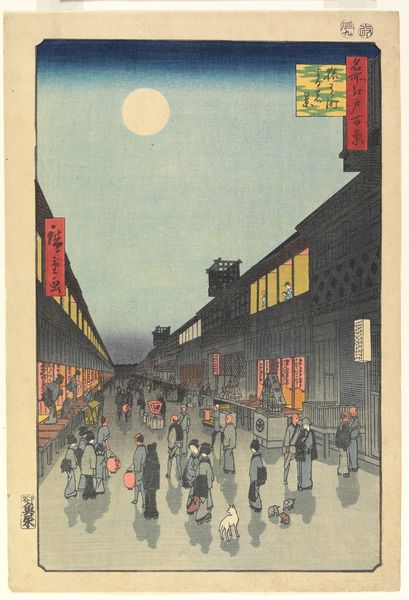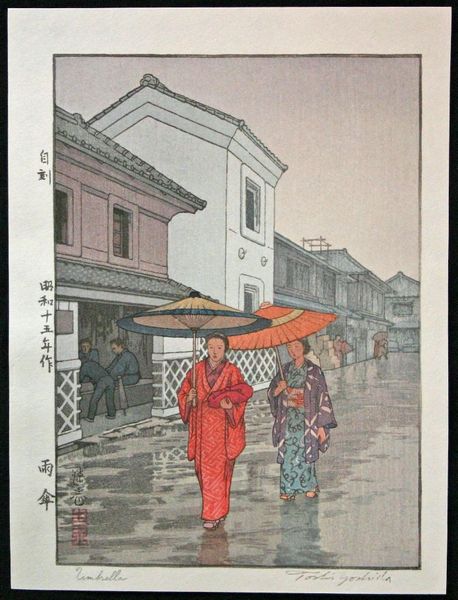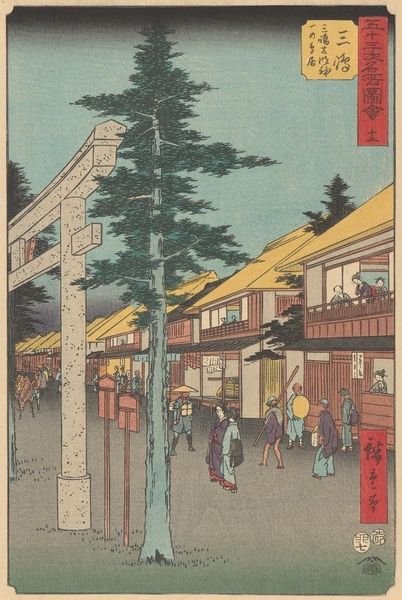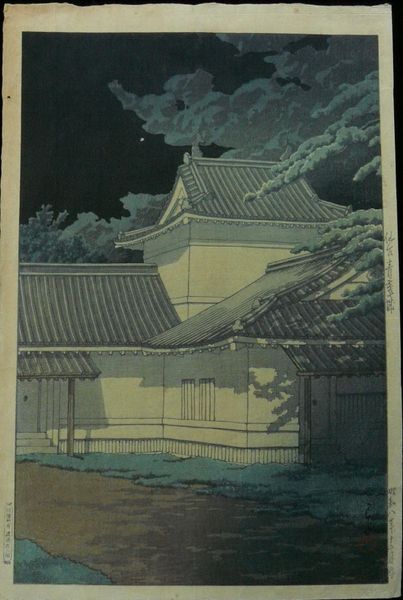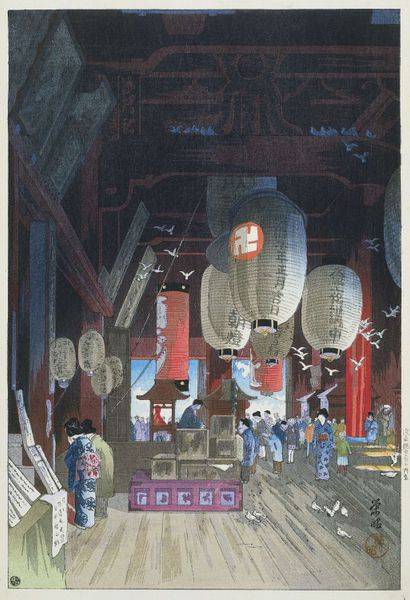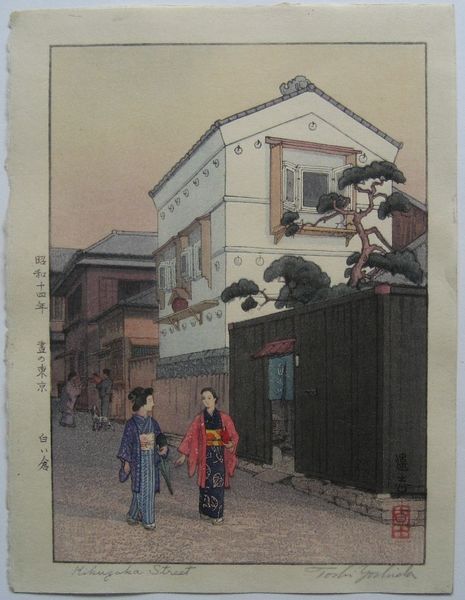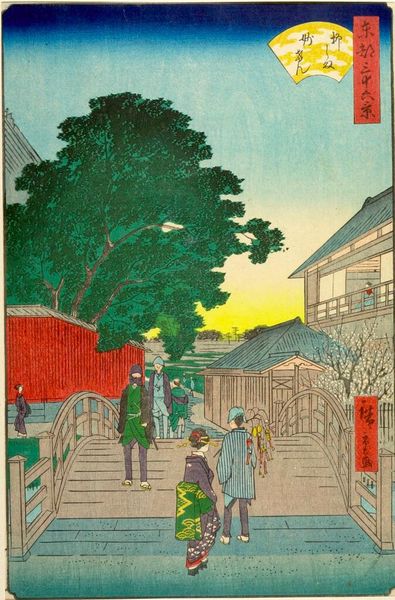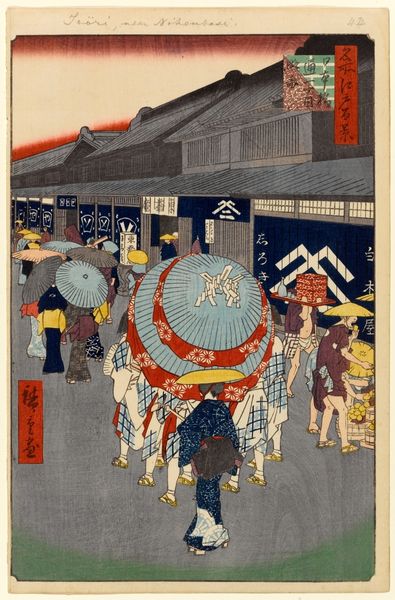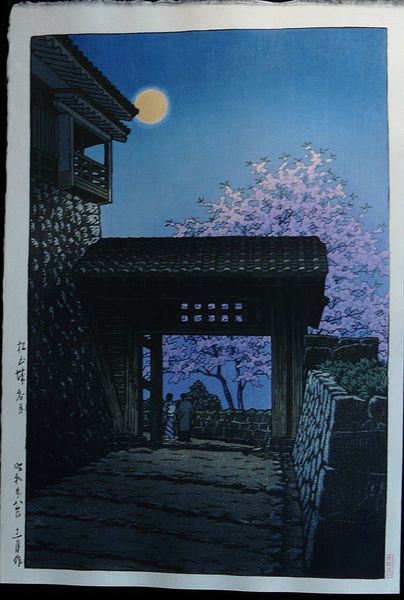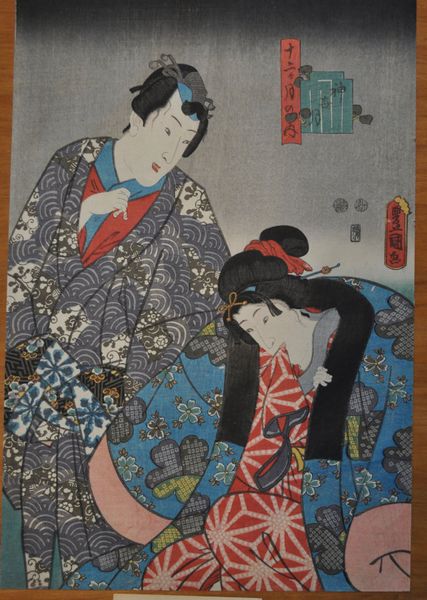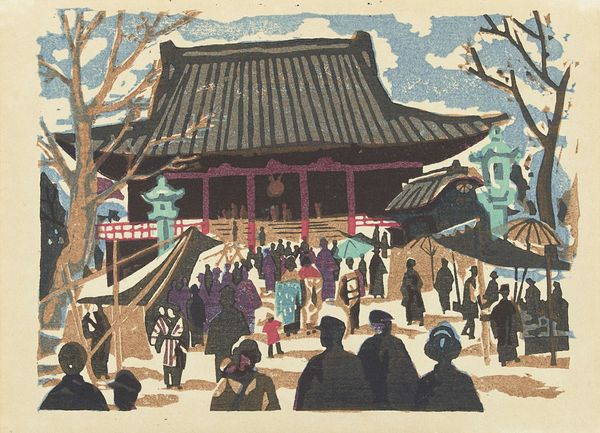
Copyright: Toshi Yoshida,Fair Use
Curator: Looking at Toshi Yoshida’s woodblock print, "Sinjuhu," from 1938, what jumps out at you? Editor: It's evocative, this dance of light and shadow. The glow of the lanterns pulls you in, doesn't it? A certain nostalgia too, as if it’s remembering something fondly… despite the teeming crowd. Curator: Nostalgia's a strong word. How do you interpret it within the broader context of Yoshida's work, a modern take on Ukiyo-e, but also commenting on a rapidly modernizing Japan, teetering on the edge of war? Editor: Perhaps nostalgia is too simple, but look at the scene – this urban tableau with the traditional clothing. It feels like a fleeting moment, caught just before it vanished completely, a longing for something genuine amid change. I love that kind of paradox. The technique adds to it; those delicate woodblock lines soften the city’s sharp edges. Curator: Indeed. The print demonstrates "Sosaku-hanga" movement principles: the artist as sole creator. Yoshida likely carved and printed this himself, adding to its intimacy. The choice to depict a bustling nightlife district, not as chaotic, but rather inviting and dreamlike, challenges the dominant narratives of modernization during that period. He's imbuing everyday scenes with subtle social commentary. Editor: You can see it in the composition itself—how he positions the figures, not lost in the throng, but navigating it, carrying their stories. The lanterns, the towering advertisements...they aren't just decorations; they symbolize desires, aspirations swirling within the community. It’s the beauty of observation in action. Curator: And it's crucial to remember this print comes just before a cataclysmic shift. A pre-war glimpse into the heart of Tokyo, before everything was irrecoverably altered. It becomes an important archive of cultural memory, highlighting individual resilience in the face of enormous pressures. Editor: I think the heart of the piece for me rests on that strange dichotomy of tradition and modernity. Looking at this work reminds me that our perspectives on a subject might vary wildly but at least converge on how that tension affects human lives in all circumstances. Curator: Yes, offering a look into the past—and even perhaps guiding us toward some crucial reflections on where we stand today.
Comments
No comments
Be the first to comment and join the conversation on the ultimate creative platform.
